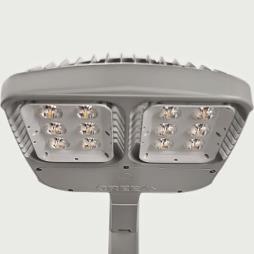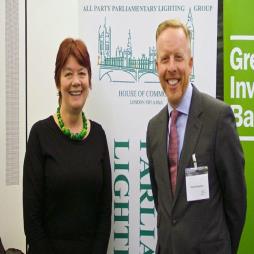Study Finds That Smart Lighting Will be Worth £33.4 BILLION by 2020
17-03-2015
The so-called ‘smart lighting’ market is expected to be valued at tens of billions by 2020, according to new research. This coincides with the news that the Eindhoven in the Netherlands is planning to introduce an LED street lighting system in which each individual light can be controlled individually, and that TfL is to spend £10.9 million upgrading more than 35,000 streetlights with a central management system. Lighting intelligence is on the rise, as James Hunt reports:
In Eindhoven, each streetlight can provide colour – if required – to enhance mood, and they can, for example, flash red to warn residents of the danger of storm or flood.
The Guardian & ASTAR Enr
The smart lighting industry involves the use of lighting control systems that deliver correct amount of light when needed. It deals with the technology where lights can automatically perform various operations at set times or under set conditions. It makes use of intelligent lighting control systems to intelligently control light, based on various parameters such as occupancy, movement, colour temperature, amount of natural light and daylight, and so on.
Increasingly so, smart lighting is working not only to more sophisticated central control, but also towards decentralised control – even IP-enabled lamps, which can be seen as part of the fast growing ‘Internet of Things’.
As the development of LEDs and OLEDs continues, it opens the possibilities of integrating sensors, controls, connectivity and communications into luminaires. This has already started with the IP-enabled LED lamp by Philips Lighting, which has been around for a couple of years now.
Smart city lighting sustainability
As an example of the latest in smart lighting, Eindhoven has just introduced a city lighting system that is sustainable and – to some extent – interactive. For example, a streetlight will turn on or off according to how busy the street is. If there is nobody present, the light will dim, but as soon as a car, bicycle or pedestrian approaches, it will switch on to accompany the vehicle or person on his way. It is even claimed that using the advanced intelligent control system, the streetlights can even remember a person’s regular walks, so the lights can actually guide pedestrians.
Each streetlight can provide colour – if required – to enhance mood, and they can, for example, flash red to warn residents of the danger of storm or flood.
The first such street lamps are already in operation in Eindhoven and the city has even installed illuminated pedestrian crossings, where sensor-equipped white stripes illuminate to tell pedestrians that it is safe to cross the road, and highway pictorial illumination is on the way too.
In another sign of the burgeoning interest in intelligent lighting – with its huge potential for increasing safety while saving energy and money - Transport for London (TfL) announced last December that it is to upgrade thousands of streetlights and invest in a state-of-the-art control system. This, the organisation estimates, will save £1.5m a year in energy costs and reduce carbon emissions by around 9,700 tonnes a year by the time the system is fully implemented in 2016.
‘Remarkable growth’ in smart lighting says report
And now there is the new market report from Markets and Markets, which finds that the smart lighting market is expected to grow at a CAGR of 15.8% from 2014 to 2020. It argues that the demand for lighting control systems is increasing ‘drastically’ because of governments and stakeholders focusing on reducing energy use.
With lighting accounting for 40% of a building’s energy cost, the study highlights the move from traditional lighting towards more advanced energy efficiency lighting devices and technologies.
The report finds that the smart lighting market is growing in a ‘remarkable way’ and the main factors driving this growth are the fast rising growth of LED lighting in commercial modernisation, the rapid growth of street lighting systems, and expansion of smart lighting for smart cities.
Currently, there are many companies launching new products in the market, and the Europe region has the largest market for smart lighting especially in commercial and industrial, public and government buildings applications.
The growth of the smart lighting market in the coming years is expected to be very important, with the revenue growth estimated to reach £33.4 billion by 2020.
The report covers the market by lighting type, lighting control components, connectivity technologies, application and geography of the market. It provides detailed analysis of the current market scenario and its estimation until 2020.






